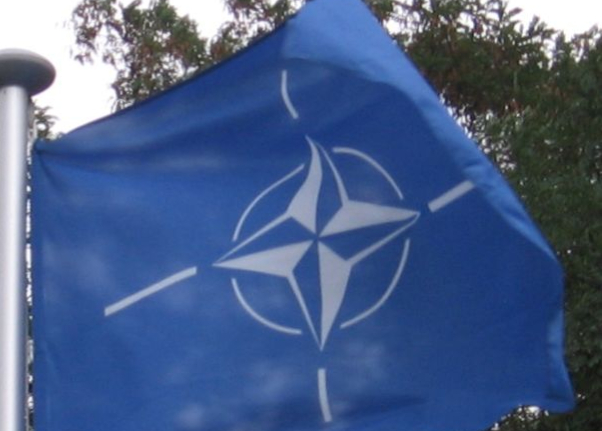Civilization
NATO Needs To Heed the Trends of the Ukraine War
The Ukraine War has taught several lessons NATO must heed, that will apply in other possible theaters of war.

The general trends of the Russia-Ukraine War are there for all to see and NATO needs to take heed of those trends to reequip Western militaries for the future battlefield.
From the Ukraine War, several insights
Two and a half years in the Ukraine War has provided some valuable trends on what the future war environment will look like between great and middle powers. We have seen the importance of gaining air superiority over the battlefield, if even in short bursts of time in Ukraine. The power of integrated air defences is also an important aspect of Ukraine War for both sides and will be a key factor in future war as just demonstrated in Iran’s missile and drone strike on Israel.
Navies remain important to any land war in terms of placing troops on enemy shores and contesting the waters through which trade flows. Systems based on land such as cruise missiles and drones, present a clear and present danger to navies at sea, and in port. Traditional land systems such as tanks, armoured fighting vehicles, infantry fighting vehicles, and artillery remain the currency of any major ground war. Air, land, and sea defence of critical facilities and bases are another important aspect of modern warfare and cannot be neglected.
Drone warfare
Additionally, Drone warfare in the air, on land, on sea, and under the sea when coupled with AI will play a spectacular role in the future of warfare. Hundreds of drones of distinct types and with diverse tasks are employed in battle every single day and the losses in terms of the numbers of drones destroyed or disabled is incredible by any standard. Cyber attacks by Russian forces have preceded almost every major attack of the war and are a daily occurrence. Information warfare by both sides have played crucial role in setting the narratives of this war at home and abroad with both sides’ narratives geared to destroy the other’s domestic and international support needed to win on the strategic political level. Space-based assets are of premium value in everything from communications to intelligence to navigation and more.
Electronic Warfare and its ability to counter and degrade an opponent’s ability to fight can be decisive in battle.
Special operations forces
Special Operations Forces (SOF) have proven invaluable in all they do in war. We have seen SOF carry out the assassination of military leaders in both sides, deep sabotage operations, and reconnaissance and targeting enemy forces well behind enemy lines. Military industrial capacity to create, design manufacture and repair the tools necessary to fight and win wars from boots to artillery shells is as critical as the frontlines on the ground.
Modern weapons of war and munitions of all types are expended at an incredible rate and need to be replaced. NATO’s thirty days of supply of artillery shells in war stocks in peacetime could be gone in a matter of a few days in modern war. The coordination needed to support a modern war from the factory floor to the frontline is an enormous undertaking for any country and most of NATO is starting behind the ‘eight ball’ on every count.
Land warfare
On land, we know that the value of tanks continues to rule the Ukrainian War in a role that supports the infantry, provides shock action on the modern battlefield, and that gives an army the ability to penetrate the enemy front. Artillery remains a decisive factor on the battlefield with the Russians firing artillery four or five thousand times a day. Mobile armoured artillery and long-range rocket artillery has proven itself of premium value to both sides. Infantry remains the ‘Queen of Battle’ but personal protective gear and armoured infantry fighting vehicles are key to survivability on the modern battlefield. Ground-based air defence, man-portable anti-tank and anti-aircraft missiles are incredibly important to the soldier on the ground backed by drones, counter drone, and strong electronic warfare systems.
To have any ability to command and communicate with your troops in the field you need a system that can operate the face of Russian and Chinese counter measures. Without these key systems soldiers die. The good new is almost all this equipment can be bought relatively quickly and off the shelf. For combat engineers the war has shown that defensive works, camouflage, mines, anti-tank ditches, dragons teeth, barbed-wire, booby-traps and other obstacles in depth can absorb the heaviest of offensives and render battlefield as killing grounds. Defeating these measures takes feats of combat engineering and no doubt will require innovative technologies and explosives.
Naval warfare insights from the Ukraine War
In terms of the naval domain, we know that attack submarines, frigates, support ships, and corvettes are here to stay. Whether they remain crewed or uncrewed is another question. We have watched Ukraine, a country essentially without a navy, chase Russia from the Black Sea and its traditional home base in Crimea to hide from Kyiv’s cruise missiles and airborne and sea-based drones. Low-cost drones and cruise missiles have destroyed about a third of Russia’s surface fleet or 20 warships, including a submarine, and even destroyed its Russian Black Sea flagship, the cruiser Moskva.
In fact, the Ukraine has virtually ended the amphibious capacity of the Russian Black Sea fleet and substantially reduced the Russian’s ability to carry out precision sea-based strikes from the southern waters once regarded as a Russian lake. It is important to note, that Russian ship design is apparently flawed, and damage control abysmal or non-existent in Moscow’s maritime forces, something like to carry over to the Chinese People’s Liberation Army (PLA) Navy.
Air warfare
If you are watching the air war in Ukraine you know the value of space assets and air superiority and multi-role fighters, ground attack aircraft, bombers, and drones in modern war. All airborne and space-borne assets have played a critical role in the fighting. Whether all these systems remain crewed, uncrewed, or a mix is again an open question. Ukraine has begged Western countries for fourth generation fighter planes like the F-16, but also combat training and maintenance routines to confront Moscow in the air. Observers have watched the impact of airborne assets delivering stand-off weapons like glide bombs to a mix of military targets.
Rotary wing aircraft in support of ground, sea and other air forces is alive and well but may be replaced in some roles by cheap drones in the future. Old defensive measures such as painted decoys on runways, camouflage on aircraft, screens, and barrage type balloons to intercept drones are keenly useful and cheap.
Electronic warfare
Important lesson from the Wests perspective is how Russian electronic warfare GPS jamming can affect the utility of expensive guided weapons systems on everything from artillery shells to bombs. Again, integrated air defences are almost as important to achieving air superiority and denying it as future fighter aircraft. There is a reason that Russia with its numerical superiority has been reluctant to use its air power until just in the last six months to a year and uses stand-off weapons like glide bombs from a distance to attempt to influence actions on the ground.
There are even reports now that Russia is pulling its airpower further back from the front to avoid Ukrainian deep strike weapons. The strength of the defence in modern war points to the need for close air support so sadly lacking in Ukraine fighting with both sides losing troops unnecessarily on the ground in brutal meatgrinder like combat.
Beyond the Ukraine war
There are few great mysteries about what future war is going to look like for the next ten to twenty years with more unmanned equipment and AI to make it more lethal. For the most part weapons systems are available off the shelf or will be available off the shelf soon. Estimates suggest that Russia rebuilds its military every six to seven years to be on a war footing. President Xi Jinping has told the Chinese military to be ready to take Taiwan by force of arms by 2027. Time is running out for the West to get ready for war with a peer opponent and the time to act is now.
This article was originally published by RealClearDefense and made available via RealClearWire.
Joe Varner is the author of Canada’s Asia-Pacific Dilemma, former Director Policy to Minister of National Defence the Hon. Peter MacKay in the Harper government, and a former Adjunct Scholar at West Point’s Modern War Institute.
-

 Civilization5 days ago
Civilization5 days agoTrump’s Venezuela Gamble and America’s Shifting National Security Strategy
-

 Civilization5 days ago
Civilization5 days agoOperation Absolute Resolve: Anatomy of a Modern Decapitation Strike
-

 Civilization4 days ago
Civilization4 days agoTen Reasons To Cheer the Arrest of Maduro
-

 Civilization22 hours ago
Civilization22 hours agoTrump’s version of the Monroe Doctrine
-

 Executive22 hours ago
Executive22 hours agoWaste of the Day: Can You Hear Me Now? No.
-

 Civilization2 days ago
Civilization2 days agoOne Fell Swoop: Lawsuit Eyes Death Blow to Racial Preferences
-

 Civilization1 day ago
Civilization1 day agoTrump’s New Doctrine of Precision Deterrence
-

 Civilization11 hours ago
Civilization11 hours agoThe Snatch and Grab of Maduro Was Not ‘Illegal’








